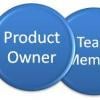Related Content
 |
Look to Corporate Standards to Guide Your Organization In large organizations with distributed teams, departments can have their own procedures, acting as if they are in completely isolated silos. One approach to solving this issue is establishing corporate standards. Tap the models of widely used standards to create practical guidance for your own organization. |
|
 |
Who’s Responsible for What? Use a RACI Matrix to Keep It Straight As projects get larger and more complex, roles and responsibilities can become confusing. To clarify, teams can create a RACI matrix: a chart that shows who is Responsible, Accountable, Consulted, and Informed for any work product. Each role has a different level of authority, so everyone knows their duty. |
|
 |
IoT Devices: Why Accessibility Should Be Your First Priority Just because something is new, shiny, and more fully featured doesn’t mean that everyone is going to want to use it. Even if your IoT-enabled smart grill is voice-activated, it still has to be both consistently functional and as easy to use as a regular grill. |
|
 |
The Consequences of Project Delay An often overlooked and underappreciated aspect of project schedules is the consequences of delay on others. Due dates and commitments sometimes matter more than they appear. Knowing the larger context of your project can help you prioritize how you undertake it, consider options, and improve problem-solving. |
|
 |
Adapt or Fail: Why Mobile Development and Testing Need to Be Agile When it comes to effective and efficient mobile app development and testing, transitioning to agile has almost become a requirement. Agile allows you to make amendments at any stage of the process, both welcoming change and using it as an advantage. |
|
 |
From Waterfall to Agile: Keys to Making the Transition A number of teams are making the agile transition, and while plenty of agile coaches give strong advice for how to go from zero to agile in a measured, streamlined manner, it’s also important to focus on how to transition from an existing waterfall mentality to an agile one. |
|
 |
The Tester as Product Owner A lot of the bugs we find were never thought through in the first place. Many of these situations are preventable, yet instead of prevention, we get the tester playing the role of the product owner—and playing it late. Why is it that we never have time to do it right, but we always have time to do it over? |
|
 |
How Do We Sell the “Test Early” Principle? Many companies are striving to test earlier. But goals and principles are always easier to articulate than they are to implement. Often, this is less of a technical issue and much more an organizational, change management challenge. Michael Sowers talks about the steps to take to make things happen. |





